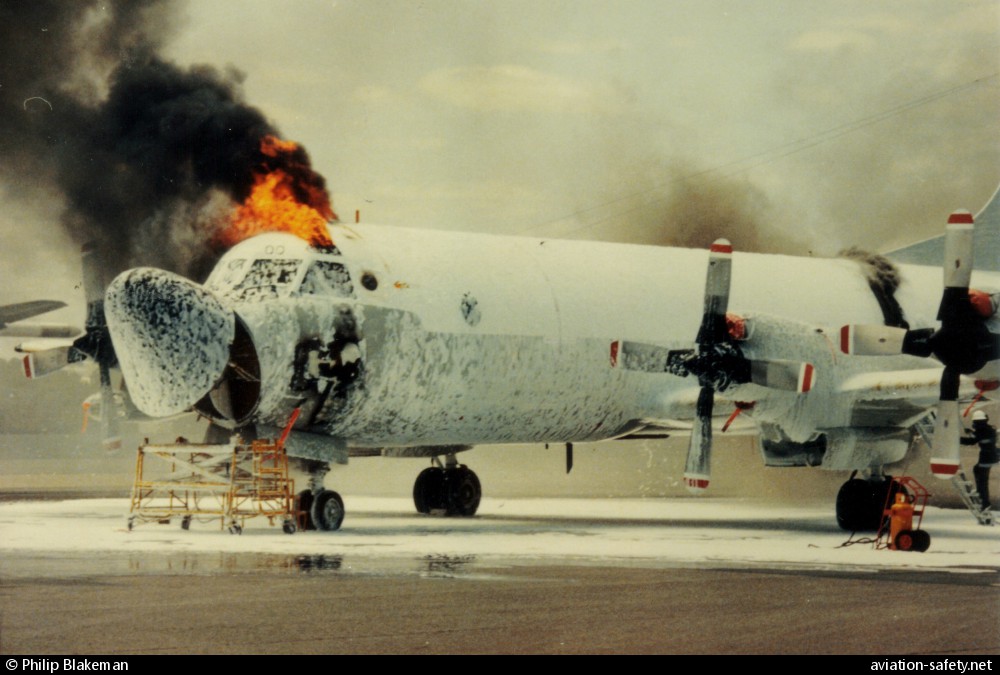
| Date: | Friday 27 January 1984 |
| Time: | |
| Type: |  Lockheed P-3B Orion |
| Owner/operator: | Royal Australian Air Force - RAAF |
| Registration: | A9-300 |
| MSN: | 185-5410 |
| Year of manufacture: | 1968 |
| Engine model: | Allison T56-A14 |
| Fatalities: | Fatalities: 0 / Occupants: 0 |
| Aircraft damage: | Destroyed, written off |
| Category: | OT |
| Location: | Edinburgh RAAF Station, SA -
 Australia Australia
|
| Phase: | Standing |
| Nature: | Military |
| Departure airport: | - |
| - | |
| Confidence Rating: |
During maintenance at RAAF Edinburgh a filled oxygen cylinder was accidently disconnected. The fitter attempted to refit the regulator but the pressure was too great and a fire had started by then. The oxygen fed the fire which then gutted the interior. Seven people were working in the area and two suffered flash burns.
CONCLUSIONS
The high pressure oxygen supply system for Orion aircraft, both on board and off, contained a range of deficiencies. It was only a question of time before a catastrophic event such as the fire in A9-300 occurred. The most probable cause of ignition for the fire in A9-300 was a thermite reaction involving aluminium, with or without, either (or both) iron oxide and copper oxide. Energy for the initiation of the reaction probably came from metal particle impact associated with high gas velocities present in the oxygen system at the time (due to a defective poppet valve). That the metal fire started at the time when an attempt was made to close the venting line to the No.2 Oxygen cylinder may not have been coincidental.
The role of oxides other than ferric oxide (in the form of rust) and other metals in the ignition of aluminium metal in the presence of oxygen is poorly understood.
The dearth of information on the ignition of metals in the presence of contaminants draws attention to the need for fundamental research in this area. The goal of such research should be to:
(a) provide a rational basis for oxygen system cleaning and maintenance procedures; and
(b) improve the safety characteristics of the oxygen equipment.
Sources:
ARL / DSTO
The Lockheed File
RAAF Orion A9-300 oxygen fire / DoD DSTO
Images:

photo (c) Philip Blakeman; Edinburgh RAAF Station, SA; 27 January 1984
Revision history:
| Date/time | Contributor | Updates |
|---|
The Aviation Safety Network is an exclusive service provided by:


 ©2024 Flight Safety Foundation
©2024 Flight Safety Foundation